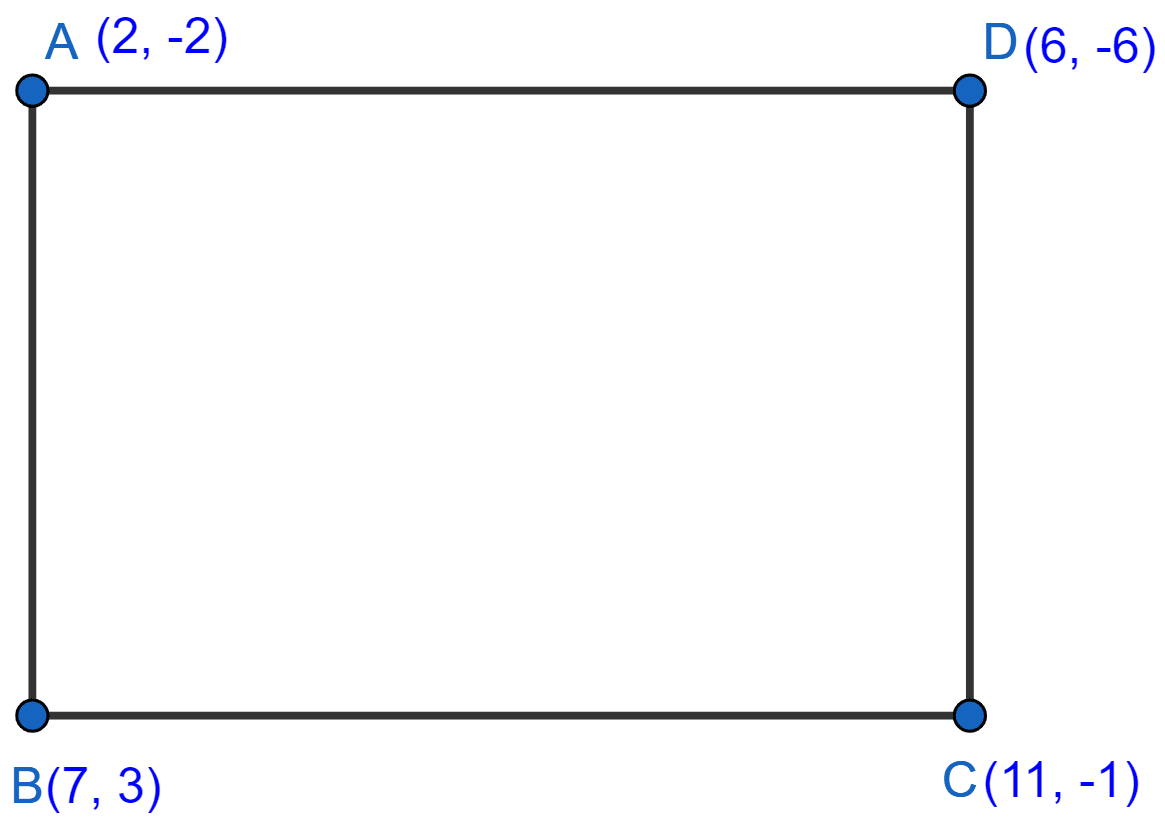Mathematics
What type of quadrilateral do the points A(2, -2), B(7, 3), C(11, -1) and D(6, -6), taken in that order, form?
Coordinate Geometry
2 Likes
Answer

By distance formula,
2 - x1)^2 + (y2 - y1)^2} \\[1em] \therefore AB = \sqrt{(7 - 2)^2 + [3 - (-2)]^2} \\[1em] = \sqrt{5^2 + 5^2} \\[1em] = \sqrt{25 + 25} \\[1em] = \sqrt{50}. \\[1em] \therefore BC = \sqrt{(11 - 7)^2 + (-1 - 3)^2} \\[1em] = \sqrt{4^2 + (-4)^2} \\[1em] = \sqrt{16 + 16} \\[1em] = \sqrt{32}. \\[1em] \therefore CD = \sqrt{(6 - 11)^2 + [-6 - (-1)]^2} \\[1em] = \sqrt{(-5)^2 + (-5)^2} \\[1em] = \sqrt{25 + 25} \\[1em] = \sqrt{50}. \\[1em] \therefore AD = \sqrt{(6 - 2)^2 + [-6 - (-2)]^2} \\[1em] = \sqrt{4^2 + (-4)^2} \\[1em] = \sqrt{16 + 16} \\[1em] = \sqrt{32}.
Hence,
AB = CD and BC = AD
Since, opposite sides are equal,
Hence, proved that ABCD is a rectangle.
Answered By
3 Likes
Related Questions
Show that the points (2, 1), (0, 3), (-2, 1) and (0, -1), taken in order, are the vertices of a square. Also find the area of the square.
Show that the points (-3, 2), (-5, -5), (2, -3) and (4, 4), taken in order, are the vertices of rhombus. Also, find its area. Do the given points form a square?
The ends of a diagonal of a square have co-ordinates (-2, p) and (p, 2). Find p if the area of the square is 40 sq. units.
Find the coordinates of the centre of the circle passing through the three given points A(5, 1), B(-3, -7) and C(7, -1).